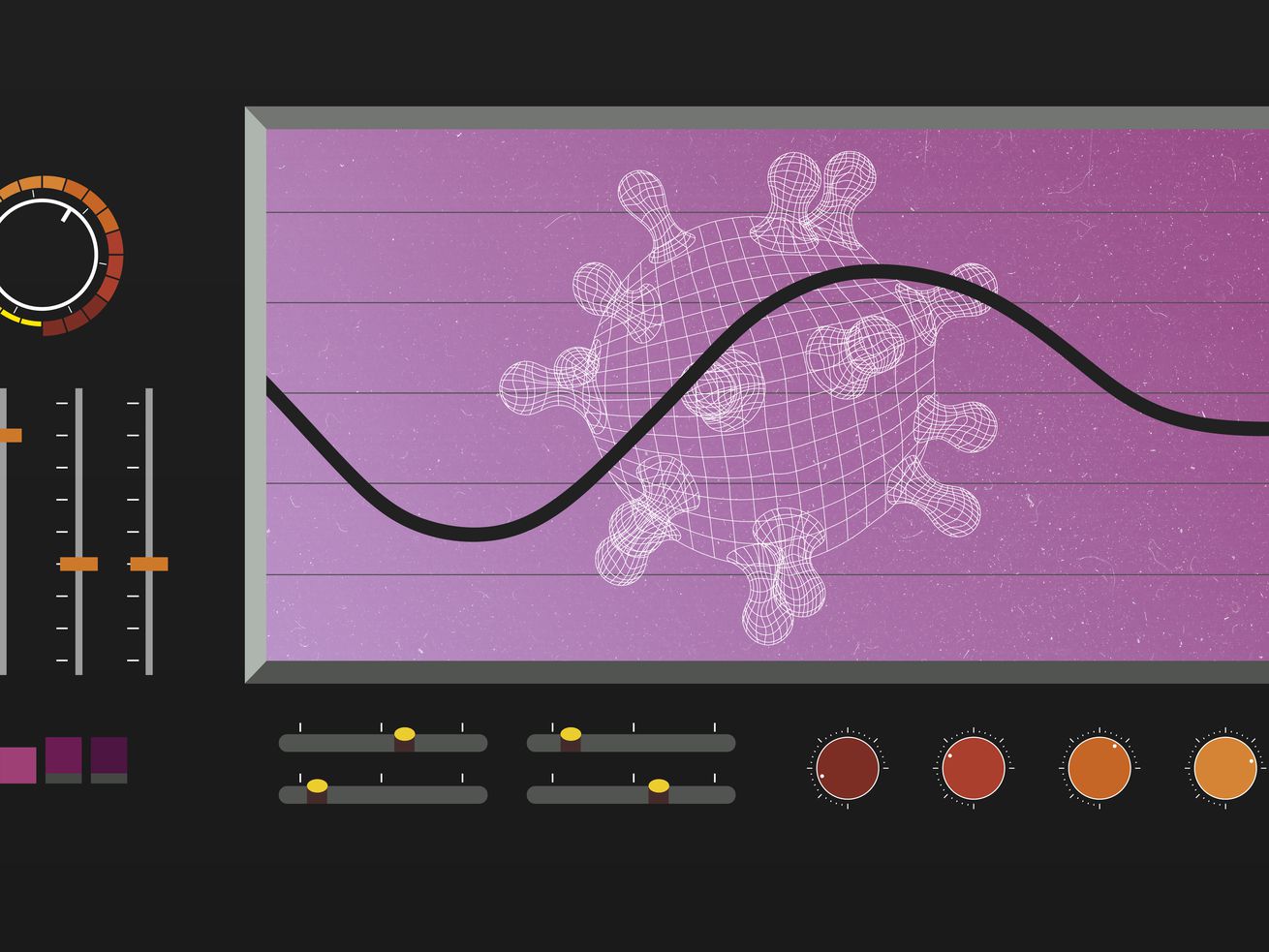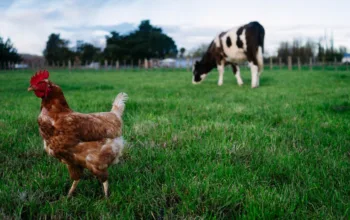The virus will keep evolving. Here’s what scientists do and don’t know about the future of Covid-19.
The delta variant of the coronavirus is here. It’s scary. It seems to spread more easily than any of the variants we’ve seen so far. It’s quickly becoming the dominant strain of the virus, outcompeting other strains. But it may not be the last.
Watching the news about delta, I keep wondering: What’s next? How might SARS-CoV-2, the coronavirus that causes Covid-19, continue to evolve? After all, the work of evolution is never over. Change is constant.
A year from now, might there be an omega variant that’s twice as transmissible as delta? “The big answer to your question is that we don’t really know,” Kari Debbink, a virologist who studies viral evolution at Bowie State University, says.
She’s not the only one. I asked several virologists and infectious disease experts how Covid-19 will continue to evolve, and they all told me there’s no way of knowing for sure.
“I think anyone who gives you a definitive answer is probably full of it,” says Adam Lauring, a physician and virologist at the University of Michigan Medical School.
But that doesn’t mean scientists are entirely in the dark. They did outline some broad lessons for the future of viruses like SARS-CoV-2, and several general scenarios for how the coronavirus could continue to evolve. And, helpfully, they explained why we don’t have a crystal ball to decipher the future.
Most importantly, they explained that this uncertainty should be all the more reason to get as many people around the world vaccinated as quickly as possible. Because the next variant could be worse.
“I think that people are starting to get the idea that the pandemic is mostly over,” Debbink says. “I wouldn’t count the virus out at this point.”
Scientists understand how we got here — but not where we’re going
As the variants emerged, virologists and infectious disease experts repeated a refrain: This was expected. Viruses evolve. The coronavirus is changing because every time the virus makes copies of itself — often billions of times in a single infected person — it can gain slight changes to its genetics, which may affect its shape and traits. This, in turn, can change the way the disease spreads and affects humans.
Delta, for example, is concerning in part because it has acquired mutations that may allow it to more quickly replicate in a person’s body.
But what’s a little tricky to understand is that while variants were expected, it was impossible to predict what form they would take. That was true at the beginning of the pandemic, and it’s still true now.
Why?
It has to do with numbers. The virus’s genome is almost 30,000 nucleotide bases long. That’s orders of magnitude simpler than our genetic code, which is around 3 billion bases long. But still, the virus’s genome has a lot of locations where a mutation can occur.
It’s just not feasible to individually test what a change at any one of those locations would do to the structure and behavior of the virus. “It’s too much,” Debbink says.
Adding to the complexity: “Mutations don’t just occur on their own, they occur in combination with each other,” says Stephen Goldstein, a virologist who studies the evolution of coronaviruses at the University of Utah.
So a single mutation, at one location in the genome, might not increase the transmissibility of the virus on its own. But if paired with another mutation, it could. “There are a huge number of combinations possible,” Goldstein says. “There’s so much complexity that it is beyond our capacity to understand.”
In the case of the alpha variant, which started to make headlines around the start of the year, Goldstein says there is one mutation — a change to the virus’s spike protein — that likely allowed it to bind more tightly to human cells. “But is that why alpha was so contagious? We really don’t know,” he says. “Because there are all these other mutations that alpha has — we don’t really understand what they do alone, let alone in conjunction with each other.”
These are the sort of complications that make some virologists feel a sense of awe about their work. A virus is so simple that by some definitions, it’s not even alive. But it’s capable of all this astronomical complexity.
It’s so complex that even lessons learned from one variant may not apply to another. Delta is more transmissible than alpha. “But it doesn’t share any key mutations with alpha,” Goldstein says. It leaves scientists not really understanding exactly why delta is so transmissible.
/cdn.vox-cdn.com/uploads/chorus_asset/file/22749170/final_concepts.jpg) Amanda Northrop/Vox
Amanda Northrop/VoxThere’s probably a limit to how bad the coronavirus can get
There are a few different (but overlapping) dimensions on which the virus can evolve.
- One is transmissibility, meaning the virus’s capacity to infect more people, on average. (It’s not exactly the same thing as “contagiousness,” though people sometimes use the words interchangeably. “You might describe a person as being contagious — meaning in the stage of infection when they’re capable of transmitting the virus,” Goldstein says. “Whereas transmissibility is a property of the virus.”)
- Another is virulence, referring to the severity of symptoms from a case of Covid-19. (It’s still unclear whether delta, or any of the other variants, are more virulent than previous strains.)
- A third is immune escape, which is what happens when viruses start to dodge antibodies and other immune system components that try to neutralize them. Viruses that evolve this trait can have at least some success spreading to people who have acquired some degree of immunity.
Even though the future evolution of the virus along these dimensions is impossible to predict, scientists can make some guesses based on their knowledge of previous outbreaks and some general principles about evolution.
“There are frameworks for thinking about all this,” Lauring says. “What we don’t know is how well they apply here.”
One framework is that there’s likely an upper limit to how bad the virus can get. It probably can’t get worse and worse forever.
If the virus grows too transmissible or too virulent, “it’ll burn itself out,” says Nash Rochman, who studies computational genomics at the National Institutes of Health. In other words, if the coronavirus killed everyone it infected (or if it infected every human on the planet and our immune systems got better at fighting it), it would run out of new hosts to infect.
“Can you have a virus that is really, really infectious, and really, really deadly?” Rochman asks. “The answer is probably not.”
So some good news: Covid-19 can’t get worse and worse indefinitely.
How transmissible could SARS-CoV-2 get?
But where is that upper limit for both transmissibility or virulence, and how far away are we from it?
You probably guessed it: No one knows.
At the beginning of the pandemic, each case of Covid-19 led to an average of two or three additional cases. This “basic reproduction value” is called R0, or R-naught. With the new variants, Lauring roughly estimates that the average infectiousness is now probably closer to 4.
Could Covid-19 become more like measles, which has an R0 that is often estimated at 12 or higher? “Boy, I guess I would be surprised, but who knows?” Lauring says.
The virus likely faces evolutionary trade-offs
Scientists know dimensions the virus could evolve on — transmissibility, virulence, immune escape — but they don’t know if the virus will face trade-offs if it optimizes itself for one or another.
“Ability to transmit and virulence — how closely those two things are linked isn’t clear,” Lauring says. Could a future variant be more transmissible as well as more virulent? “We don’t really know,” he goes on.
It’s also true that in the future, the virus could get better at dodging our defenses, and evolve to start to avoid detection and destruction by our immune system. Researchers have seen other coronaviruses (which cause common colds) do this over a period of years. Some of the variants show some degree of immune evasion right now; we could see more in the future. (Of course, in response to immune escape, scientists can update vaccines to prepare our immune systems for new variants.)
But there could be a trade-off here, too. It’s possible, the NIH’s Rochman says, that mutations that lead to increased immune evasion also might make the virus less infectious. It has to do with the virus’s spike protein, which not only binds to human cells but also serves as the part of the virus that the immune system learns to recognize. If the spike protein changes to fool immune system cells, that might degrade its ability to bind to cells.
Again, this remains to be seen.
The coronavirus is unlikely to start spreading in totally new ways
So is there anything we might be able to predict here? One aspect Lauring brings up from studying past pandemics is that the rate of change in the virus ought to slow over time.
With a novel pandemic virus, he says, it’s easier for it to make big gains in the beginning. There is lower-hanging fruit, in terms of evolutionary gains to make.
But, he cautions, that slowdown usually happens over the course of years, not months. “There’s data from the 2009 [H1N1 flu] pandemic, that the virus evolved quickest in the first couple years, and then it started slowing down a little bit in terms of how quickly it was evolving.” Three years from now, he says, he wouldn’t expect Covid-19 to keep making the big jumps in transmissibility it’s making now.
Another, more confident prediction: SARS-CoV-2 isn’t likely to drastically change how it transmits.
Right now, it’s a respiratory virus. It is transferred when people who are near one another breathe, talk, shout, sing, etc.
“If you consider a cold virus, you don’t worry it’s going to start to be sexually transmitted or something,” Debbink says. Likewise, it probably won’t morph to be super surface-transmissible. So that’s not something that we would necessarily worry a ton about.
Lauring agrees. “I don’t think it’s going to change its route of transmission,” he says. “It’s not going to all of a sudden spread a different way.”
All the evolutionary changes, the scientists say, are likely to be in terms of degree, not kind. So the virus may become more or less transmissible, but it’s not going to become an entirely different virus with totally new ways to spread.
The good news is that scientists are learning
We clearly don’t know what new, worrying coronavirus variants could await us. But we know how to prevent the worst from happening. The longer the pandemic rages on, the more chances the virus has to evolve. We need to keep vaccinating people. Not only will that slow the rate of spread, it will also reduce the number of hosts in which the virus can evolve.
“The virus ups its game, and so we need to up our game,” Lauring says.
For now, the vaccines available in the United States are holding up against the variants. It’s possible that in the future, the virus will evolve so that the vaccines are less effective. But by vaccinating as many people as possible, all across the world, we make this potential future less likely.
All of the unknowns here are surely a bit frustrating to contend with. But there’s one more snippet of good news. SARS-CoV-2 is the most intensely studied virus in the history of science. Scientists have been tracking its every evolutionary move since the pandemic began.
“It’s been done on a scale that’s completely massive and never been seen before,” Lauring says. “With that much data, people will develop a more refined understanding for how any virus evolves.” So in the future, because of the work being done now, we may be able to predict the evolution of viruses just a little bit better.
Author: Brian Resnick
Read More



